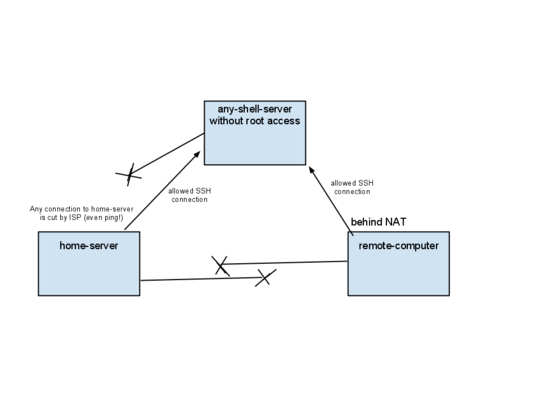8
10
I have a computer at home (home-server) that runs irssi, rtorrent etc. My ISP is blocking every traffic from outside (dumb, I know, but it's the only ISP I can have).
I want to be able to log in into home-server's shell from any remote-computer (behind NAT).
I've got shell account somewhere (without root access), that may be some use to that.
Here's diagram describing situation:

Is this possible to gain access to shell on my home-server? I heard something about ssh tunneling, but I couldn't find any tutorial matching this case.
Could you explain what's going on there? – seler – 2011-07-26T22:40:55.067
1after
ssh 127.0.0.1 -p 20000it worked. Still, if you could please explain this... – seler – 2011-07-26T22:53:07.0271He is setting up two really basic VPNs to the relay box. You might want to look at using something like autossh on your home box to make sure the tunnel stays up, and is automatically started. – Zoredache – 2011-07-26T22:54:17.277
1@seler I added some detail, please let me know if you need more explanation :) – Darth Android – 2011-07-27T13:57:30.393